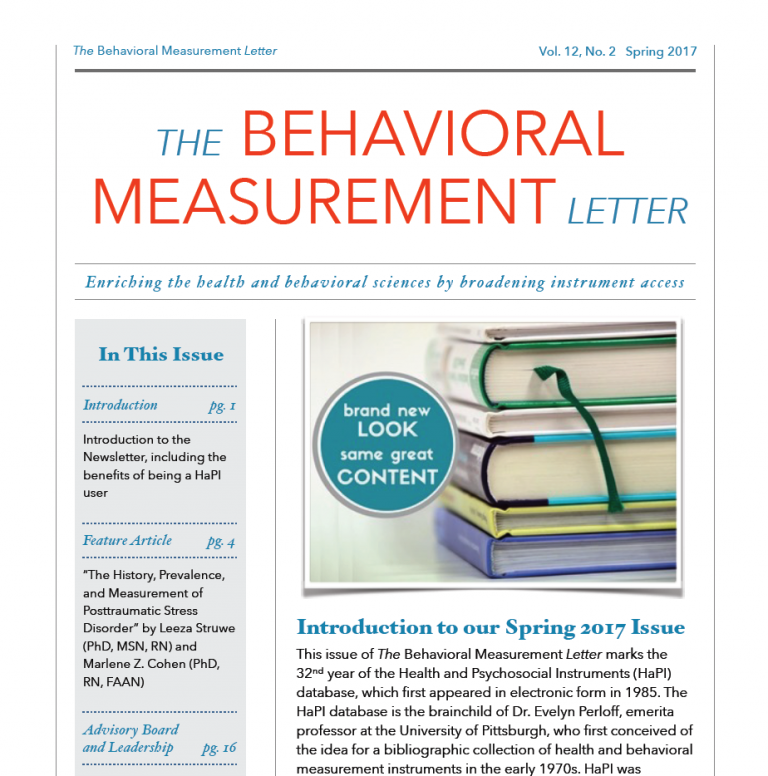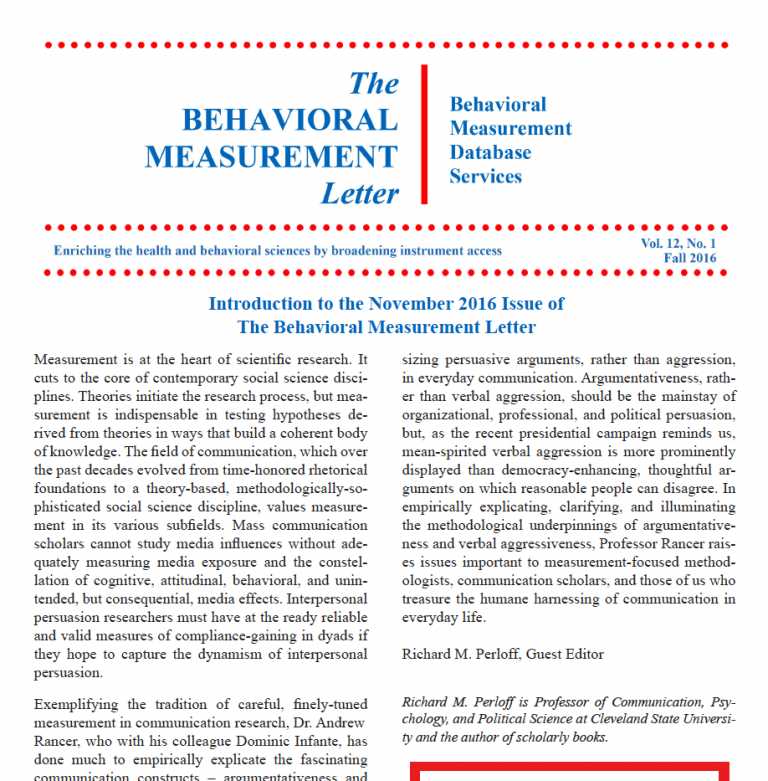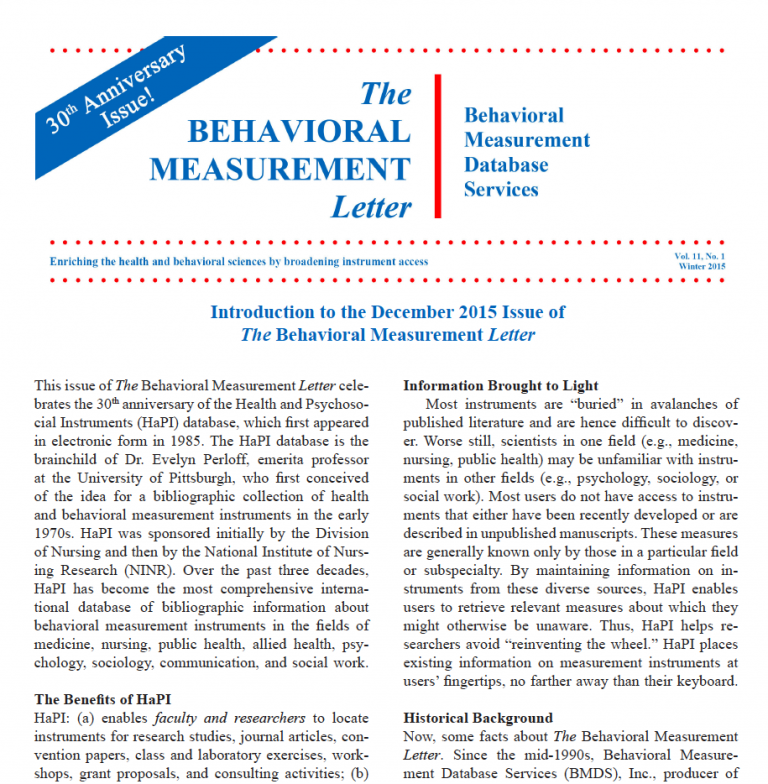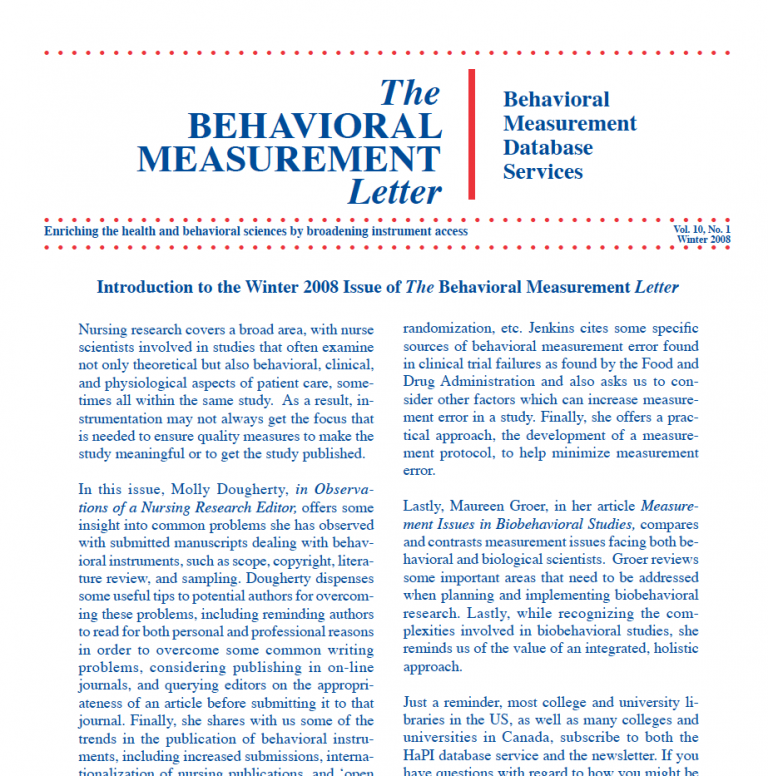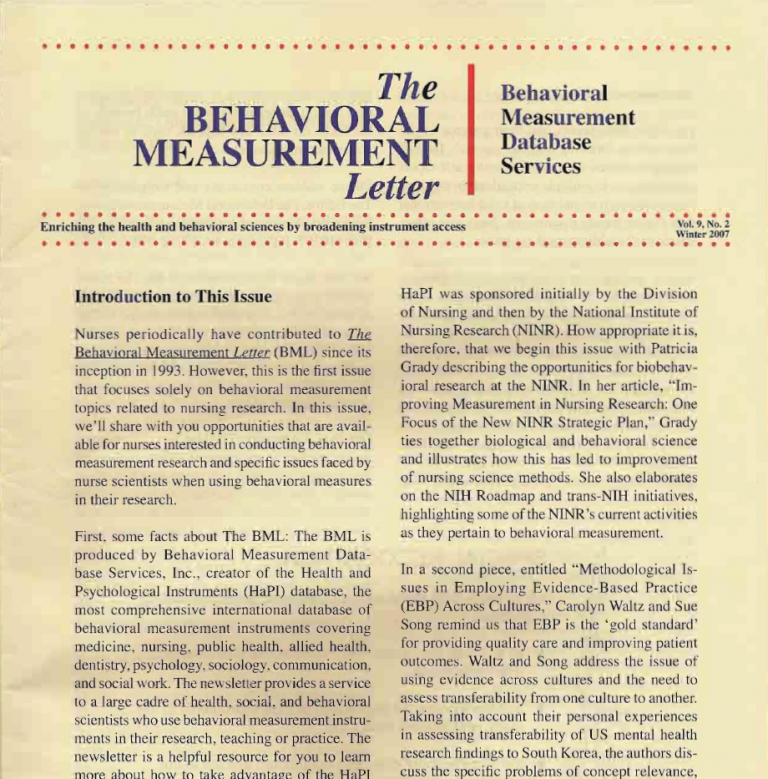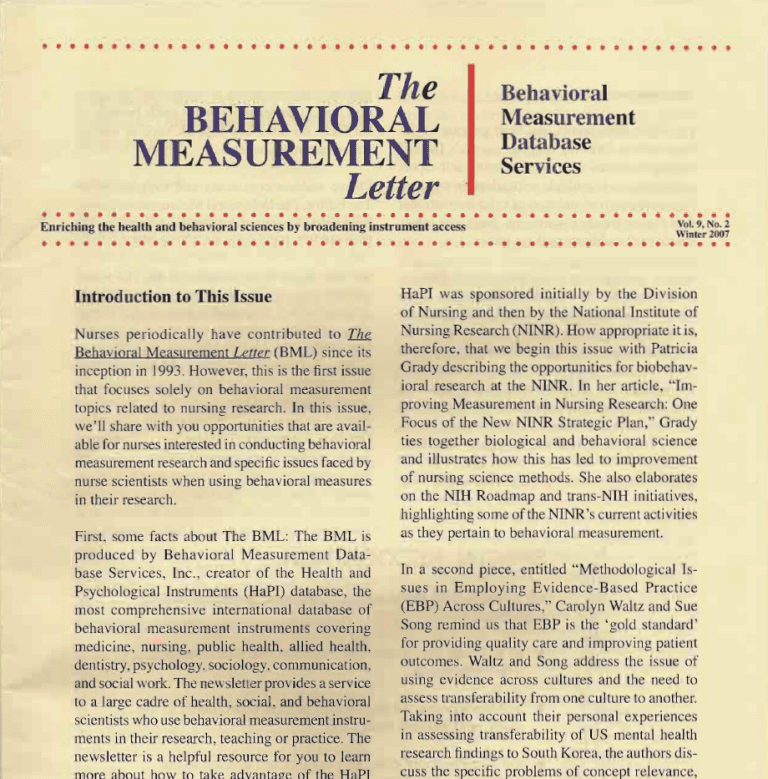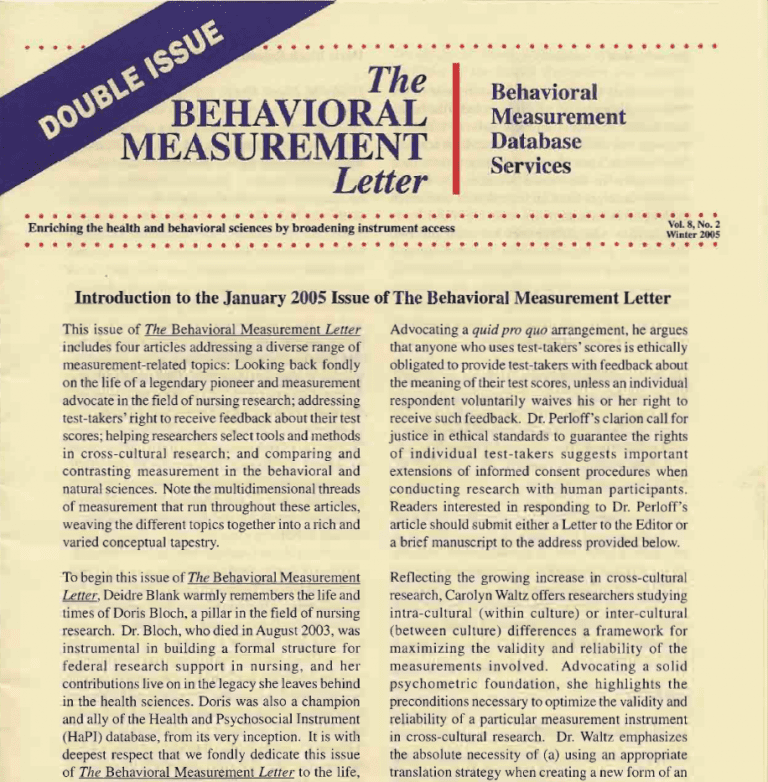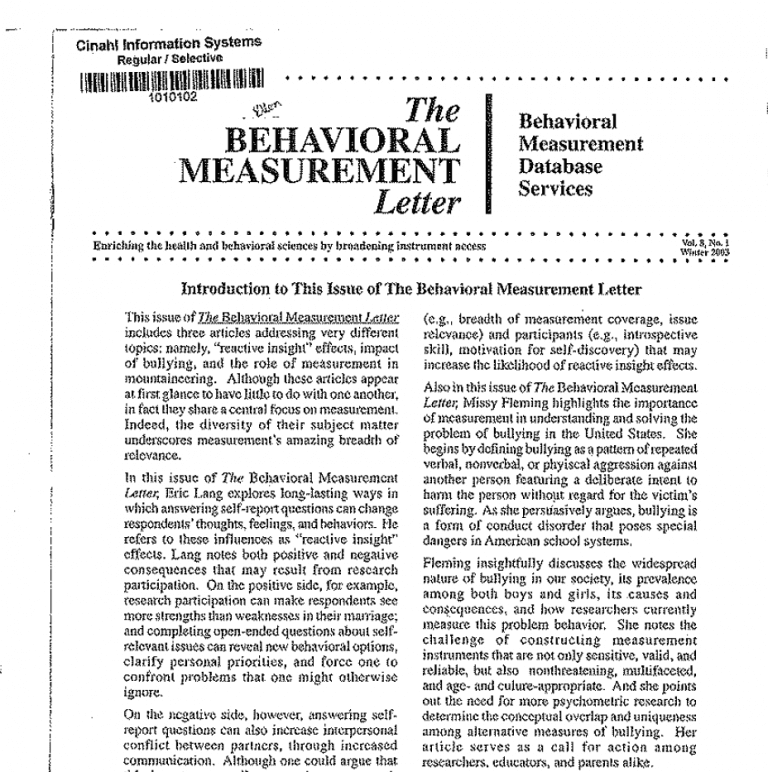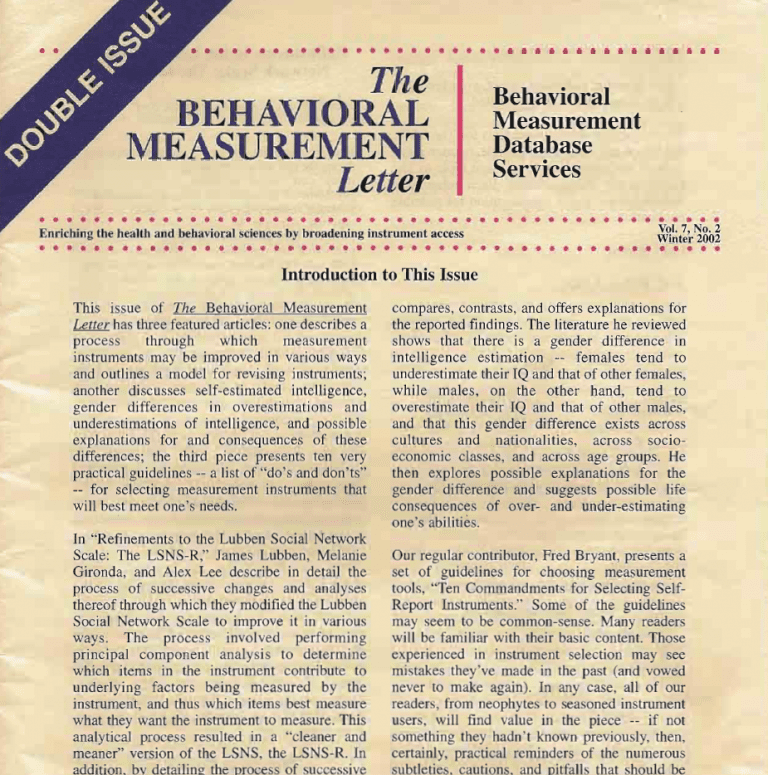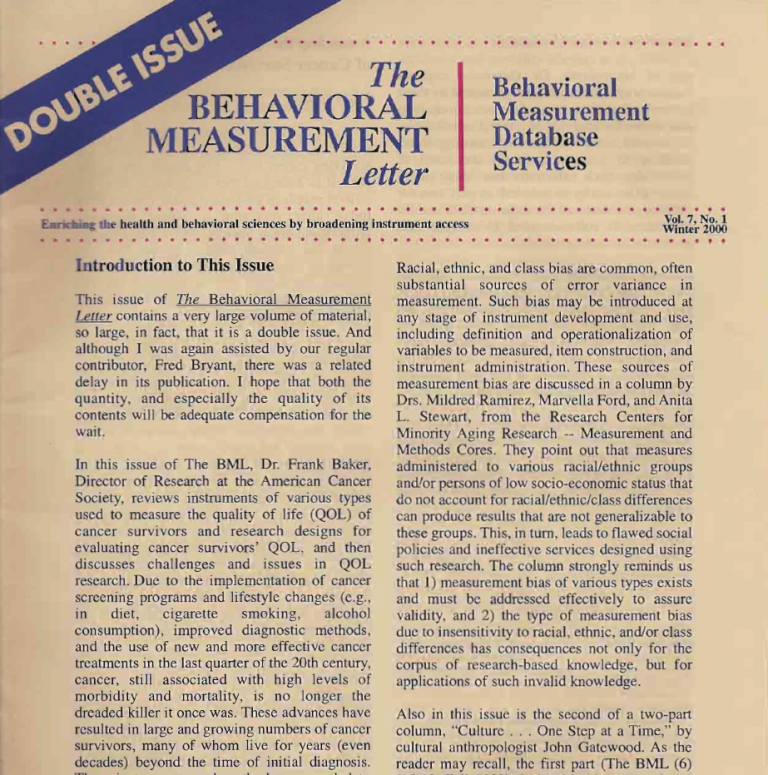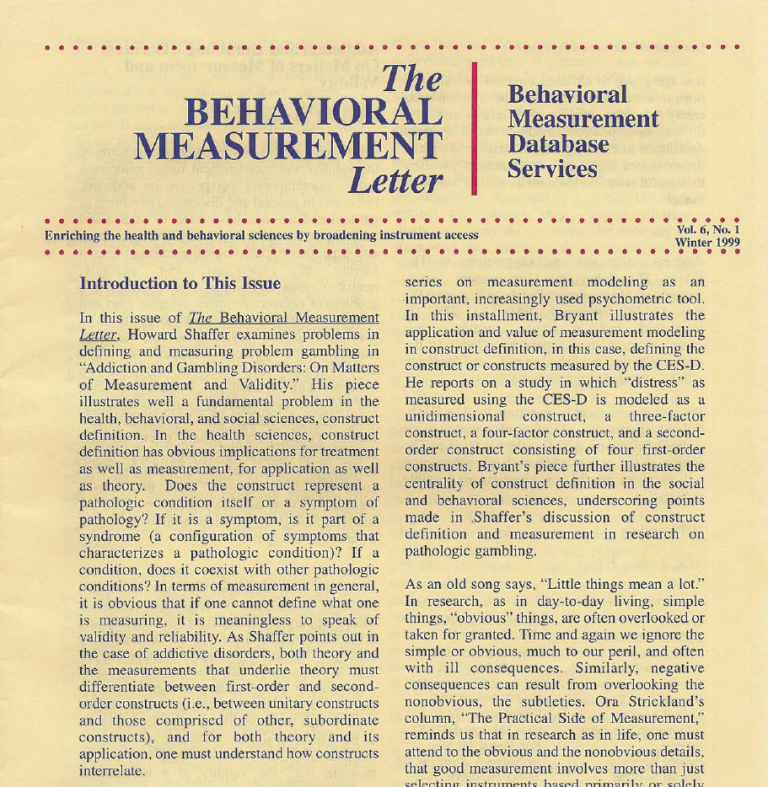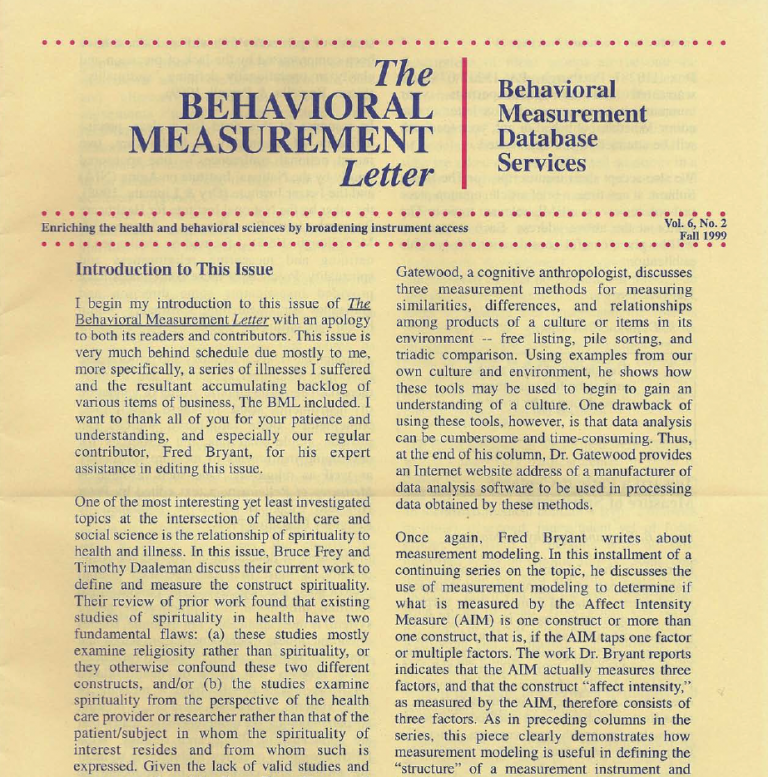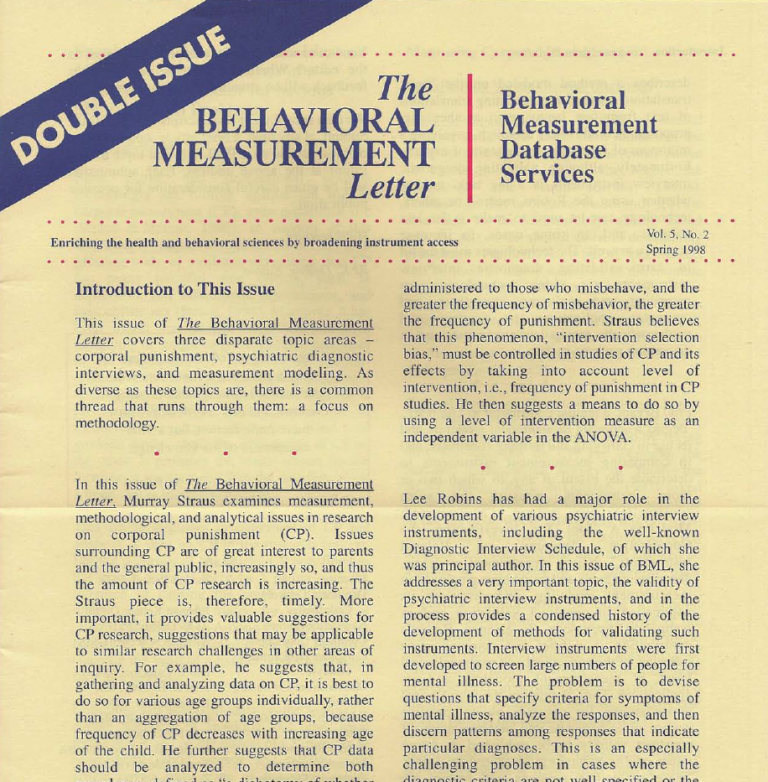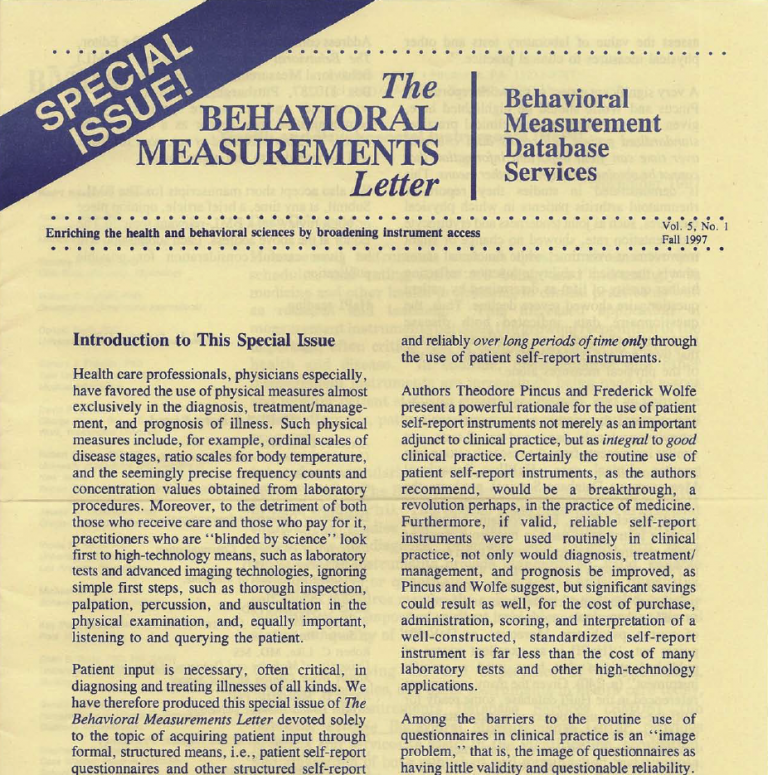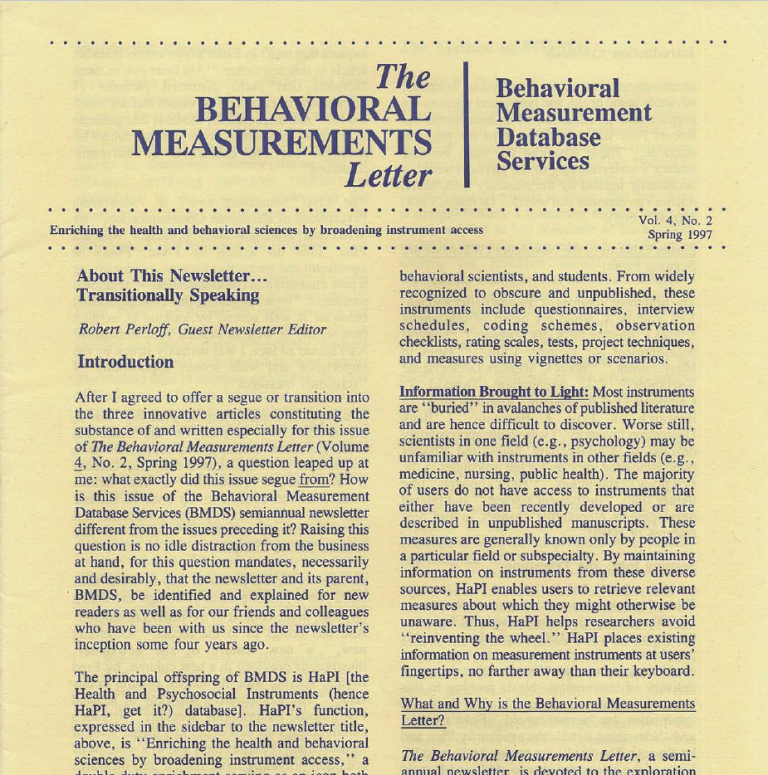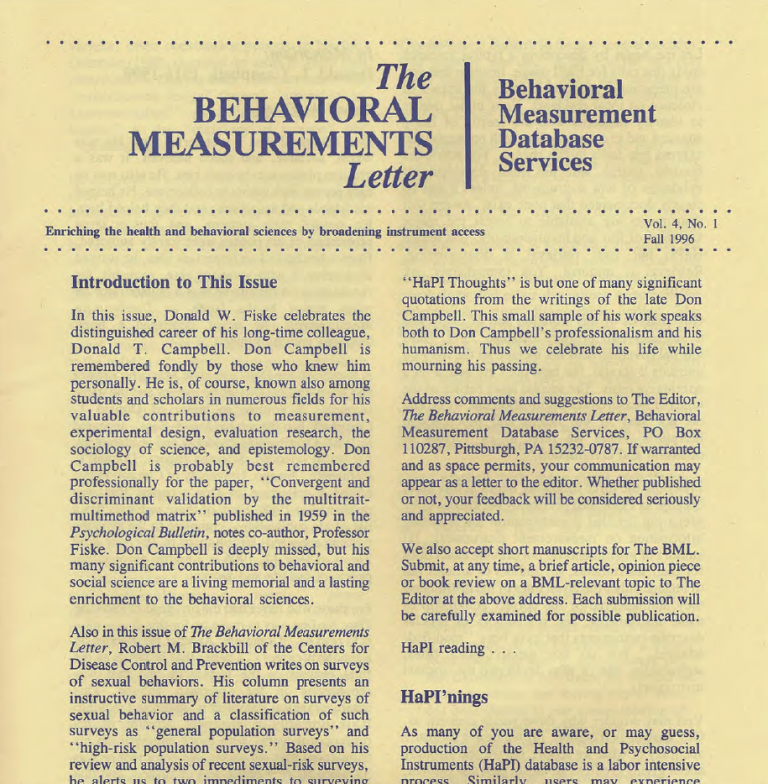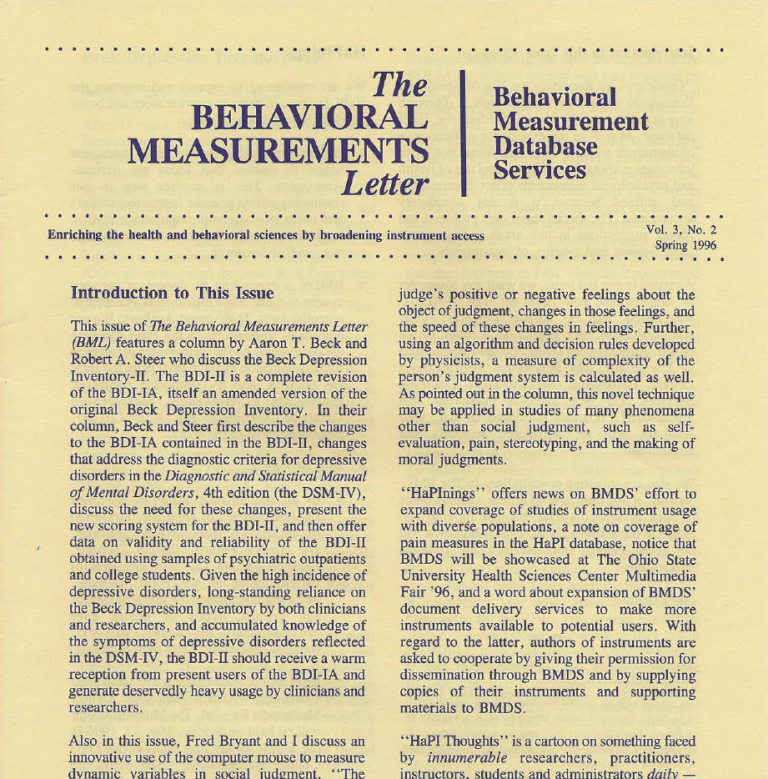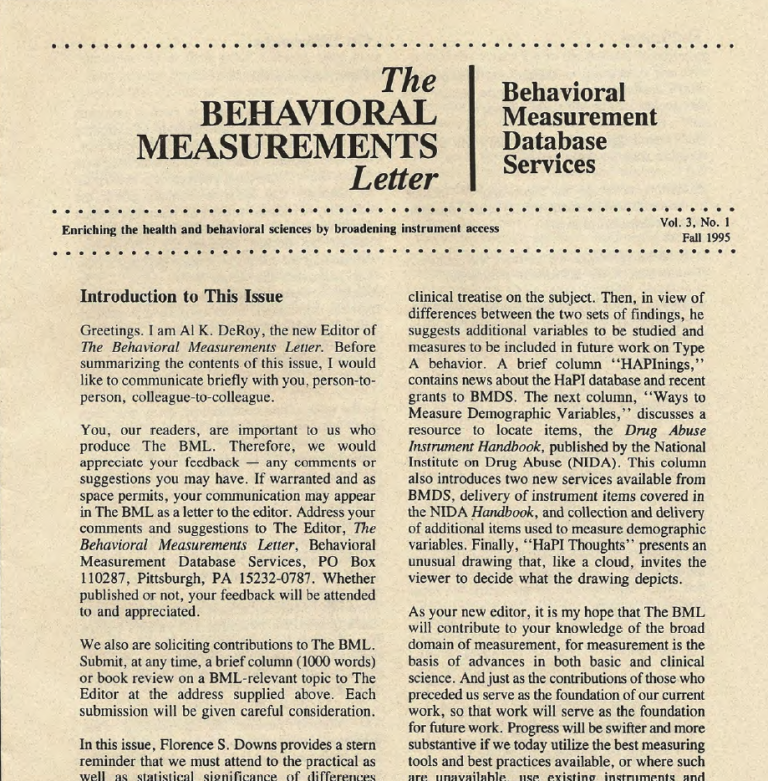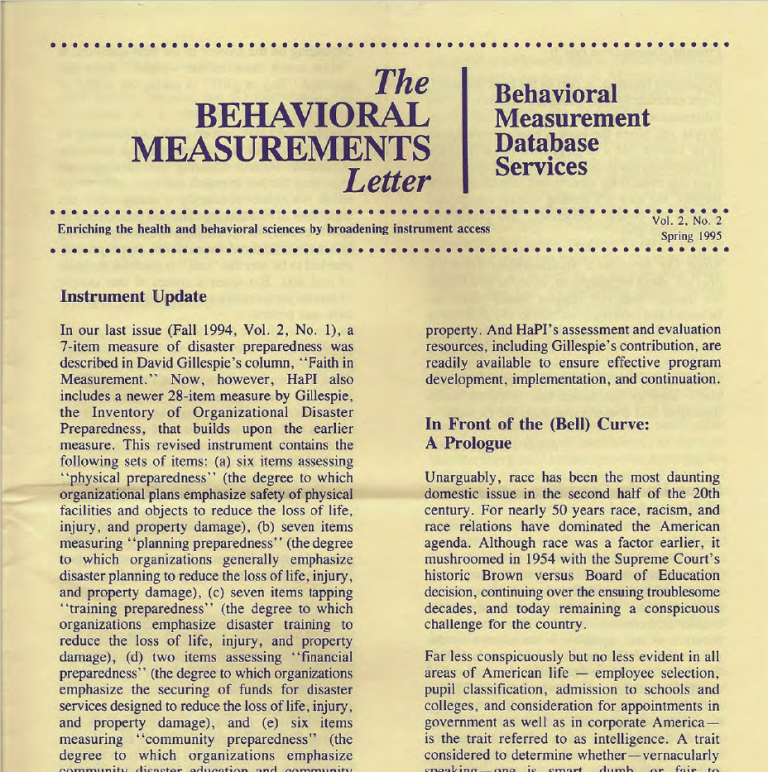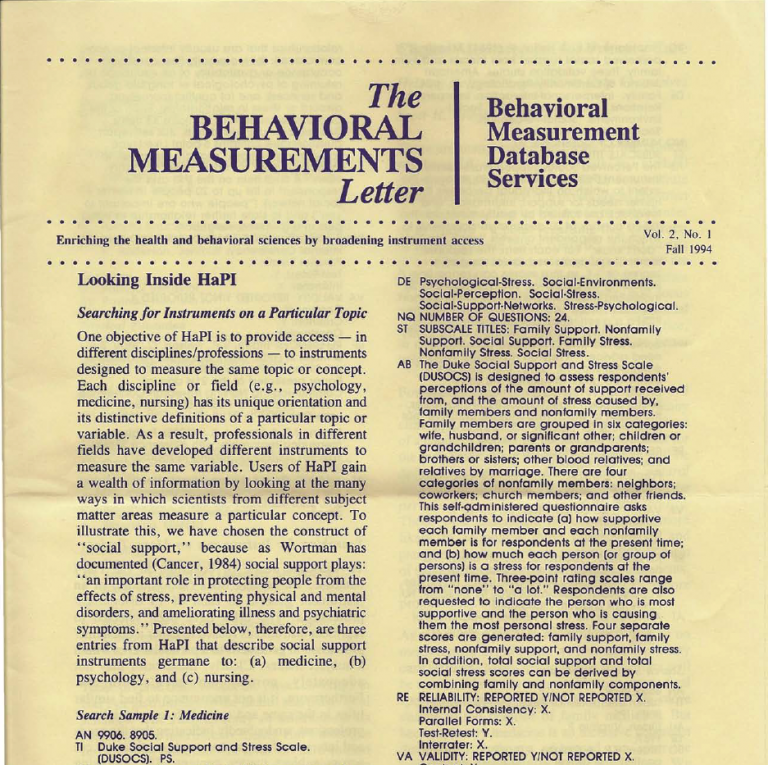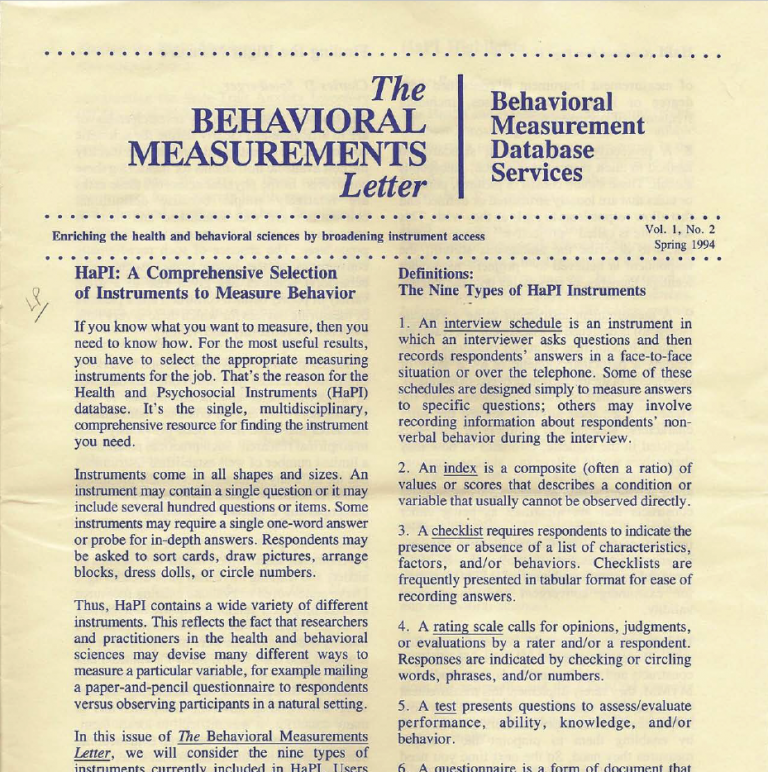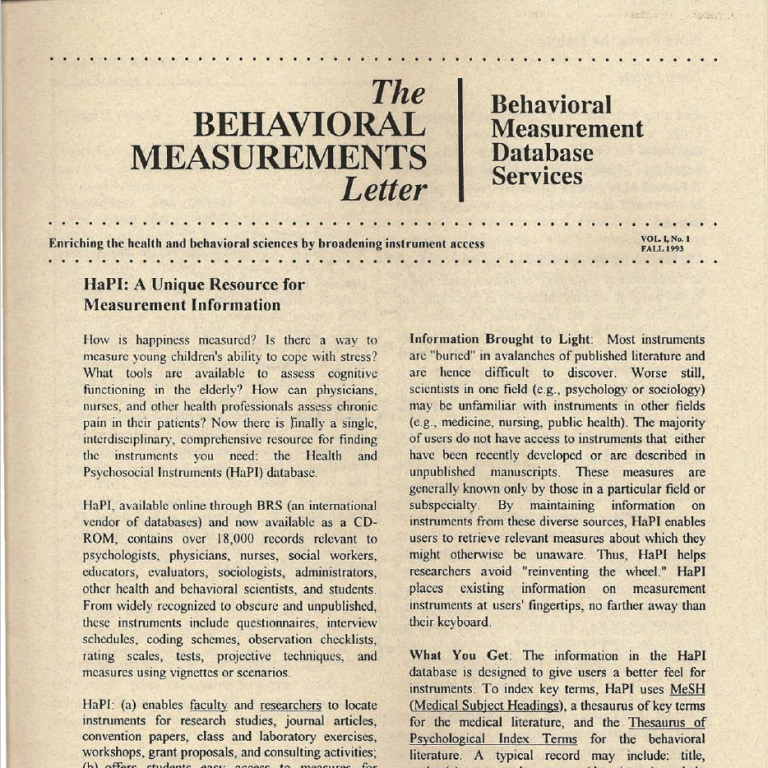Continued article from The Behavioral Measurement Letter, VOL 1, No.1, FALL 1993
Ada S Hinshaw
The rapid growth of nursing research during the past two decades has been due, in large part, to its emphasis on measurement. Not surprisingly, this effort has produced, and continues to produce, a variety of reliable and val.id instruments relating to both the science and the practice of nursing.
lf we are to maintain this level of productivity and excellence, we must continue to stress the role that measurement plays in nursing research, teaching, and practice. Toward this effort, I wish to propose that we address three measurement issues, in addition, of course, to reliability, validity, and sensitivity. A first issue concerns external validity, or the generalizability of research results across client populations, settings, and time. For example, in my area of research on job satisfaction, numerous scales are available, but many have not been tested with multiple nursing population. The measures of job satisfaction used in these studies are often very different from one another. Because the concept of job satisfaction is multidimensional, different scales may assess very different aspects of the construct. This makes it difficult to draw meaningful conclusions across a set of studies.
A second issue relates to integrating physiological and behavioral measures, where the units of measurement and definitions of the same construct can be very different. This poses problems for nursing research and practice. Accurate diagnosis and appropriate intervention often require that nurses perform physiological and behavioral assessments. Moreover, nurses view patients holistically. Since nursing research attempts to understand concepts and relationships in the broader context of the whole individual, many phenomena are multi dimensional and are more completely under- stood with a diverse, multiple indicator approach. The challenge then becomes how to integrate multiple indicators in a meaningful way.
My third and last issue calls for ready access to the myriad instruments developed for nursing by nurses and other health and behavioral science researchers. Without current information on what already exists,
we are doomed to “reinventing the wheel,” with great waste and expenditure of time, energy, and money.
We in nursing are, therefore, proud to have initiated funding for Health and Psychosocial Instruments (HaPI) in 1985. HaPI currently serves as a primary resource for linking the increasing number of available measures with the increasing number of users who need measurement instruments for their research, teaching, and practice.
Nursing science is at an exciting and challenging stage of development. Its emphasis on the generation of knowledge for practice and the development of instruments for accurate measurement will help to guarantee high standards of nursing care and nursing research. Consistent and valid measurement not only advances. the science of nursing, but enables nurses to accurately identify symptoms and improve the quality of care to treat patients’ problems.
Ada S. Hinshaw is Director of the National Institute for Nursing Research at the National Institutes of Health. She received her PhD in sociology from the University of Arizona and her MSN from Yale University. Dr. Hinshaw’s areas of specialization include quality of patient caregiving and nursing staff turnover.
“Experience is the child of Thought and Thought is the child of action.”
Benjamin Disraeli (1826)
Read additional articles from this newsletter:
HaPI: A Unique Resource for Measurement Information
Vol. 1, No. 1: Fall 1993

